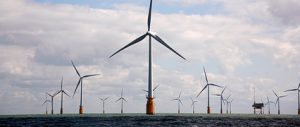Politicians from 23 of the world’s leading economies – including China – are convening in London today for a clean-technology summit hosted by UK and US energy ministers Ed Davey and Stephen Chu. It is the third Clean Energy Ministerial (CEM) since the forum was launched in 2009.
We asked a group of experts and activists from around the world what they would tell the summit.
“Put communities at the heart”
Yu Yin, Chinese NGO Greenovation Hub
Clean-tech development is not just about scientific invention, but also political will and commitment to solving the current climate crisis. But even with all of these, clean-tech development will never be effective without full consideration of economic, social and environmental equity. In many places, large scale hydro, solar and wind developments in the hands of an oligopolistic energy industry have led to resource conflicts and land grabbing. The energy generated is sent directly to distant cities or industrial zones, while local communities are left in the dark and often deprived of their livelihoods.
The development of clean-tech must be people-centred and environmentally friendly. Energy saving, demand-side management and energy decentralisation must be prioritised. Stakeholders, especially those who may be impacted by large-scale development, must be allowed to fully engage in the decision-making process, and the principle of prior informed consent must be applied. Small-scale clean-tech must be able to benefit poor people and encourage ordinary citizens to save and use energy efficiently, be self-sufficient and trade excess energy with other. The whole process of clean-tech development must ensure that environmental impacts – regardless of national boundaries – are minimised and continuously mitigated.
“Shut down fossil fuels – and fast”
Bill McKibben, founder, US-based campaign group 350.org
Global warming is not some future threat – it’s starting to bite already, as the stretch of wild weather around the world makes clear. So it’s time to tell your heads of state the truth: if they don’t make enormous progress on clean-tech in the next few years, the debate is going to be largely moot, because the physics and chemistry of climate are implacable.
And by “enormous progress”, I don’t mean putting up some windmills. I mean going to the heart of the fossil-fuel system and figuring out how to shut it down in short order.
“Break the old power monopolies”
Jürgen Maier, director of Germany’s NGO Forum on Environment & Development
Clean tech is developing very well in some parts of the world, and in others not. Why don’t you just look at the policies pursued in those countries where it works well, and adopt them in all your countries? You will find the key obstacle in so many countries is the old power monopolies whose political hold needs to be broken.
Let your people invest in solar panels and wind turbines rather than crazy stock markets or Swiss bank accounts, and you will see these technologies can proliferate as quickly as cell-phones and the internet. Create the right framework, regulate the power market, curb fossil-fuel subsidies and redirect the money to clean technologies – there is no copyright on the best practice examples.
And what’s more: The best answer to nuclear renegades like Iran and North Korea is to give up nuclear yourself and become independent from fossil-fuel imports.
“We need direct action, not cap-and-trade”
Sandip Sen, Indian author and freelance journalist on technology, energy and business
Clean energy needs direct action, not cap-and-trade. Ever since the Kyoto Protocol, the effort to contain carbon through cap-and-trade has absorbed a lot of time, effort and resources, and produced no significant emission reduction. It would be simpler and cheaper for the world’s governments to directly promote clean energy technologies like wind power, solar power and battery-operated electric vehicles than to spend billions on negative economics like “carbon capping”.
Plant data from multiple emission source points, often miles apart, at thermal and process plants are universally compromised to meet emission targets. Carbon capping or regulatory control of carbon or any other toxic effluent is highly improbable because it is so simple to bypass a carbon dioxide or sulphur dioxide recorder or analyser at the micro level. The EU’s Emissions Trading Scheme and the carbon markets have consistently failed to deliver. So what do we do?
1) Let each nation pledge at least 1% of its budget allocation to investment in wind, solar energy and electric bikes and cars, the three technologies that are the closest challengers to fossil fuels.
2) Let technologists who understand energy plant operations and clean-tech development take over from economists who dominate global emission-control strategies today and create a blueprint for rapid clean-energy technology adaptation.
3) Let us stop destabilising the Middle East so that fossil-fuel prices cool down and subsidies to fossil fuels that are today six times that of clean energy can be re-routed to clean-tech development.
“Complacency is dangerous”
Ajay Gambhir, research fellow, Grantham Institute, Imperial College London
There is a sense that clean-tech is becoming increasingly mainstream, with global investment in both 2010 and 2011 close to a quarter of a trillion dollars and an increasing number of countries signing up to a growing list of policy tools to support alternative forms of energy.
It would be dangerous to suppose, however, that clean-tech development is taking care of itself. This market would not exist without government policies grounded in the context of the need to fight climate change and support energy security – and would be at significant risk if governments turned away from this problem or failed to address it at the pace required.
A broad range of future scenarios around low-carbon energy systems pathways are telling us a similar message: that the coming decades will need to see a dramatic increase in the pace and level of development and deployment of technologies that in some cases do not exist on a commercial scale today – carbon capture and storage, concentrated solar power, electric vehicles and ultra-efficient building shells to name but a few.
At a time when the world’s energy system remains overwhelmingly reliant on fossil fuels, with developed and emerging economies alike focusing significant attention on how to secure reliable access to these fuels, it is important that governments’ policy suite clearly addresses the barriers to developing and deploying the low-carbon technologies essential to decarbonising our energy supplies over the coming decades.
“Make the most of food waste”
Martijn Hoogerwerf, chief operating officer, China Europe Bio-Energy Consortium
Today, food waste is generally landfilled and incinerated. This is a clear “waste”: food waste contains significant amounts of energy that can be extracted with existing technologies.
Governments should be aware of the potential of such a valuable and locally generated source of renewable energy and proactively implement policies to: promote separation-at-source; activate efficient food-waste collection systems and support commercialisation efforts of food-waste treatment technologies.
Food-waste generation has increasingly become a part of our consumption society and its true cost is too often overlooked. The traditional disposal methods of landfilling and incinerating are capital intensive, environmentally unfriendly and subject to intense public opposition.
Food waste typically constitutes 40% to 60% of municipal solid waste and is the hardest part to reduce, re-use and recycle. It also reduces the efficiencies of incinerators and waste-to-energy plants, and is a key reason landfills need to be actively managed.
Technologies to extract the energy value of food waste exist today and commercial development of these technologies should receive further attention and support from governments around the globe. China, for example, produces 70 to 80 million tonnes of food waste per year, which has the potential to produce 30 to 40 million cubic metres of biogas, the equivalent of 25% to 35% of the country’s current natural gas consumption.
“Be aggressive and ambitious”
Letha Tawney, senior associate, World Resources Institute’s climate and energy programme
The third Clean Energy Ministerial is an opportunity to take stock of progress across its 11 initiatives, but also to raise the level of ambition within them. The CEM’s focus on action-oriented cooperation among interested countries is a welcome addition to cooperation to solve the climate challenge but it must continue to add value. Maintaining a strong focus on action that unlocks the stickiest clean energy challenges is crucial to the CEM living up to its potential.
It is encouraging, for example, to see the Solar and Wind Working Group move from the foundational task of developing a Global Atlas to the more difficult discussions about creating domestic economic value through wind and solar while avoiding local content requirements. This progression to the tough issues – trade and domestic industry support – as countries build confidence in their cooperation, is encouraging.
Some thought the CEM might bleed momentum from the UNFCCC when it was announced before crucial negotiations in Copenhagen. So far the initiatives are building a track record of collaboration and step-by-step success. The CEM must continue deliver on its unique role by aggressively pushing action forward in the initiatives during this decisive decade.
Homepage image by Markles55


